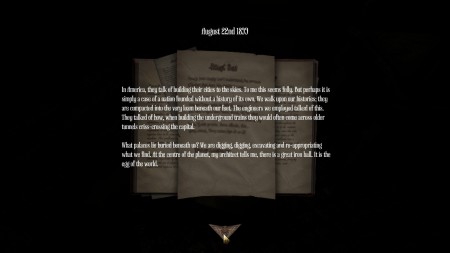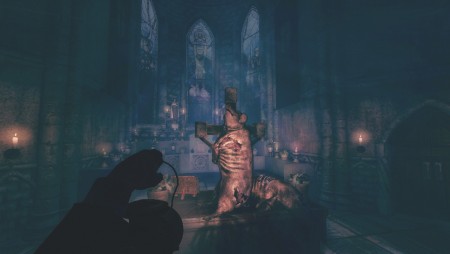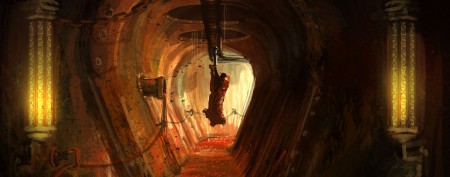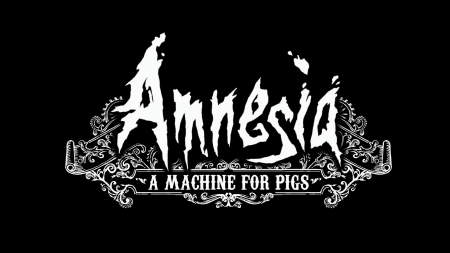Back in 2010, Frictional Games released a Horror title in Amnesia: The Dark Descent, that took the genre by storm and finally gave horror fans a game to be proud of, but, does the sequel live up to the expectations of the first?
Well if I’m being honest with you, it depends on what you’re expecting from A Machine for Pigs. Don’t go into this looking for it to be as scary and immersive as The Dark Descent, this is a completely different game and is Amnesia only in title. A lot of things have changed in terms of gameplay mechanics and vast improvements have been made to the visuals.
You start the game in control of our protagonist, Oswald Mandus, who wakes up in his house after hearing the sounds of his twin children. Without any of his memories (why else would they call this Amnesia?) You must make your way through the game while going through journal entries which, in my opinion, is a good mechanic used to move the narrative forward as well as stringing together pieces of Oswald Mandus’s past and it also helps you figure out what to do next.

As I mentioned above, the gameplay mechanics have been completely changed from the first game, such as the removal of the UI, which has become a Frictional Games trademark going back to the brilliant Penumbra series. Meaning, there is no longer any interactivity with the items in the environment. Also, no more flinging items around like a drunk removal guy- which is a pity really, because it’s one of the things that made the original title really enjoyable.
Another key feature removed from this game is the inventory system, so there’s no longer a need to be careful with how long you leave the lantern running, because it doesn’t run out. Therefore you no longer have to run around looking for oil and tinderboxes in order to maintain your sanity, because (you guessed it) there’s no longer a sanity meter involved either. And that means that lighting no longer plays a part in the game either.
Remember the terrifying feeling when you heard loud siren like noises accompanied by the loud growling of a grunt while being chased? Well that’s been replaced by flickering lights and the loud squeals of the manpigs (that have taken over from the grunts) which, let’s be honest, I can re-enact by myself and it still wouldn’t be scary… it would just get me sent to the local mental asylum.

With such drastic changes being made to the game you have to ask the question, is it still scary? The answer to that question is no. I mean, it had it’s fair share of moments at the beginning with the whole house rocking suddenly and the loud pig squeals, but there was one major noticeable change above all else that stopped this from being a scary title; exploration is completely gone, so now this has pretty much become an on-rails game, where your hands are being held and you’re being taken on a journey rather than exploring for yourself.
Now, I don’t want to spend too much time banging on about what made the first game so great and scary, so I’ll just end all talk of the first game with this. What made Amnesia: The Dark Descent so scary was the fact that light was very limited and the only way to hide from the grunts was the darkness. That’s where the problem lies because the main character Daniel suffered from nyctophobia, so you were limited to how long you could hide in the dark before your sanity meter ran down and caused your vision to go blurry.
You had to be preservative when it came to using items in the inventory system, such as being careful with how much oil you used to fill up the lantern or how many tinderboxes you used to light up certain areas. And then there was the fear of getting lost, because you know if you got lost you would end up having to use those items making the game more difficult to play.

Final Thoughts
There are many other details I can go into, but the point I’m trying to make is- when playing this game, don’t expect a direct sequel to The Dark Descent. Instead, you should play this as a completely original game.
In my opinion it fails as a horror game, but it more than makes up for it with narrative. As is evident in Dear Esther, this is one area I can say The Chinese Room are exceptionally talented with. There’s a scene near the end (SPOILER ALERT!!! I guess) where the “engineer” is pleading with Mandus and trying to warn him of the horrors that future centuries would bring upon mankind to prevent him from destroying the machine.
This is one of the few times while playing a game where I genuinely felt some kind of emotional connection and full credit goes to the writing skills of The Chinese Room. Like I said, it’s a good narrative, but a bad horror game.
 BrutalGamer Bringing you Brutally Honest feedback from today's entertainment industry.
BrutalGamer Bringing you Brutally Honest feedback from today's entertainment industry.






